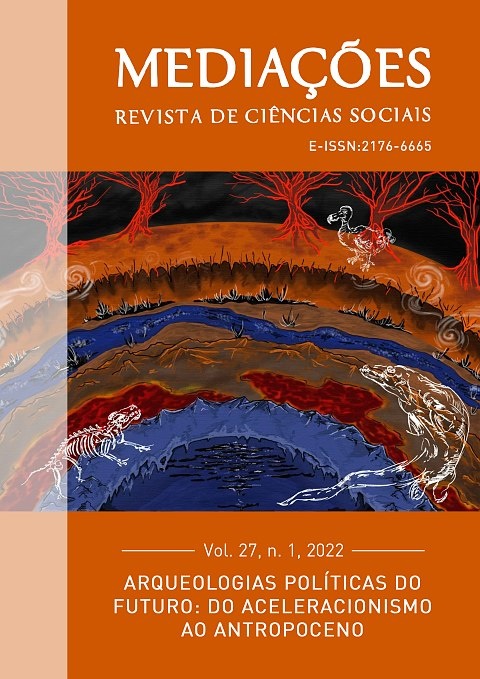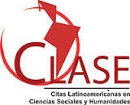Political Congruence and Party Representation in the 54th Legislature of the National Congress
DOI:
https://doi.org/10.5433/2176-6665.2022v27n1e44312Keywords:
political representation, congruence legislative, post-materialism.Abstract
This article analyzes the extent to which parliamentarians of the three most expressive parties in the 54th Legislature (2011-2015) - PT, PMDB e PSDB - ideologically represent their voters, collaborating with the debate on political representation in Brazil. The analyzes resulted from the use of a survey applied to congressmen of the National Congress through the Brazilian Legislative Survey in 2013 and by public opinion data from the Latin American Public Opinion Project in 2014. The research focuses the observation of the central trends of self-positioning on a Left-Right scale and in relation to specific themes of a post-materialist nature. The set of analyses identified that, within the context analyzed, most of the themes present high political congruence between parliamentarians and their respective voters of the political parties analyzed regarding the following topics: abortion, homoaffective union and environment versus economy.
Downloads
References
ASSIS, A. E. S. Q.; MENDES, L. Democracia representativa e congruência política: uma relação de causalidade. Revista e-Civitas, v. 13, n. 2, 2020. p. 152-168.
CARREIRÃO, Y. O debate metodológico na literatura internacional sobre representação política como "congruência política" entre representados e representantes. Caxambu, 38º Encontro Anual da ANPOCS, 2014.
CONDESSO, F. R. Direito do Ambiente. Coimbra: Almedina. p. 72/73. 2001.
CONVERSE, P. E.; PIERCE, dR. Political Representation in France. Cambridge, Mass.: Harvard University Press. 1986.
DIAS, M. R.; MENEZES, G. C.; FERREIRA, G.C;. Um estudo sobre a classificação ideológica dos partidos políticos através de seus projetos de lei “A quem serve o Graal ?” Revista Civitas, Porto Alegre, v. 12, n. 2, p.209–235, 2012.
GIMENES, É. R. Partidarismo, mobilização cognitiva e participação política no Brasil. In: MARTELLI, C. G.; JARDIM, M. C.; GIMENES, É. R. (Orgs.). Participação política e democracia no Brasil contemporâneo. 1ed.Araraquara: Cultura Acadêmica, 2018, v. 1, p. 111-150.
GIMENES, É. R; FURRIEL, W. O.; BORBA, J.; RIBEIRO, E. A. Partidarismo no Brasil: Análise longitudinal dos condicionantes da identificação partidária (2002-2014). REVISTA DEBATES (UFRGS), v. 10, p. 121-148, 2016.
GOLDER, M.; STRAMSKI, J. Ideological Congruence and Electoral Institutions. American Journal Of Political Science, v. 54, n. 1, p.90-106. 2010.
GUTTMACHER INSTITUT. 2011. Long-term decline in U.S. abortions has stalled; provider harassment has increased. Disponível em: www.guttimacherinstitut.org/sections/abortion.php. Acesso em: dez. 2017.
HEYWOOD, A. Ideologias políticas: do feminismo ao multiculturalismo; trad. Janaína Marco Antonio, Mariane Janikian. – 1. Ed. São Paulo: Ática, 2010. 2v.
INGLEHART, R. The Renaissance of Political Culture. American Political Science Review, 82, 4. 1988.
KINZO, M. D. G. Os partidos no eleitorado: percepções políticas e laços partidários. In: KINZO, M. D.; BRAGA, M. S. (Orgs.). Eleitores e representação partidária no Brasil. São Paulo: Humanitas, 2007.
LAYRARGUES, P. P. Muito além da natureza: educação ambiental e reprodução social. In LOUREIRO, C.F.B.; LAYRARGUES, P.P.; CASTRO, R.S.de (orgs.). Pensamento complexo, dialética e educação ambiental. São Paulo: Cortez, p71-103, 2006.
MACIEL, A. P. B.; ALARCON, A. O.; GIMENES, E. R. Partidos políticos e espectro ideológico: parlamentares, especialistas, esquerda e direita no Brasil. Revista Eletrônica de Ciência Política, vol. 8, n. 3, 2017.
MANIN, B.; PRZEWORSKI, A.; STOKES, S. Eleições e representação. Lua Nova, n. 67. 2006.
MILLER W.; STOKES, D. Constituency influence in Congress. American Political Science Review, 1963.
MOREIRA, P. G.; OLIVEIRA, N. C. O Brasil e as Três Conferências das Nações Unidas sobre meio ambiente. História e Economia, v. 9, p. 99-116, 2012.
OTERO-FELIPE, P. E.;MATEOS, A.; RIVAS, C. Political parties versus presidents. An analysis of ideological congruence in Latin America. Revista Latinoamericana de Opinión Pública, v. 9, n. 1, 2020. p. 119-150.
OTERO-FELIPE, P. E.; RODRÍGUEZ-ZEPEDA, J. Measuring representation in Latin America: A study of ideological congruence between parties and voters. 106th Annual Meeting of the American Political Science Association. Washington DC, 2010.
PAGE, B.; SHAPIRO, R. Effects of public opinion on policy. American Political Science Review, 1983.
PIERUCCI, A. F. As bases da Nova Direita. Novos Estudos CEBRAP, n. 19, pp. 26-45, 1987.
PITKIN, H. O conceito de representação. In CARDOSO, F. H e MARTINS, C. E. (orgs) Política & Sociedade. Volume 2. SP: Cia. Editora Nacional. 1967.
POWER, T. J.; ZUCCO Jr., C. Estimating ideology of Brazilian legislative parties, 1990-2005: a research communication. Latin American Research Review, v. 44, n. 1, p. 218-246. 2009.
RIBEIRO, E. A.; BOLOGNESI, B. Ideologia e representação: valores e atitudes de legisladores municipais. In: GIMENES, É. R.; BORBA, J. (orgs.). Poder legislativo e cultura política: valores, atitudes, trajetória e comportamento político dos vereadores e vereadoras do Estado de Santa Catarina Curitiba: CPOP, 2018. p. 131-181.
ROMERO, R. R. Introducción: La representación polítca como desafo de la democracia moderna. In: ______ (Ed.). Representación polítca sustantva de las minorías indígenas en México. Cultura, insttuciones y subjetvidad. Cidade do México: UNAM, 2021. p. 15-42.
SARTORI, G. Parties and party systems: a framework for analysis. New York: Cambridge University Press, 1976.
SCHEEFFER, F. Ideologia e comportamento parlamentar na Câmara dos Deputados: faz sentido ainda falar em esquerda e direita? Programa de Pós-graduação em Sociologia Política – Tese de Doutorado. Florianópolis: UFSC. 2016.
SCHEEFFER, F. Esquerda, direita e “novos” temas na Câmara dos Deputados. Revista Eletrônica Direito e Política. V. 12, n. 3. 2017.
SINGER, A. Raízes sociais e ideológicas do lulismo. Novos Estudos, 85. Novembro, 2009.
STOKES, D. E. Spatial Models of Party Competition. American Political Science Review, n. 57, pp. 368-377. 1963.
TAROUCO, G.; MADEIRA, R. M. Os partidos brasileiros segundo seus estudiosos: análise de um expert survey. Revista Civitas, Poroto Alegre, v. 15, n. 1, e24-e39, 2015.
TAROUCO, G.; MADEIRA, R. M. Partidos, programas e o debate sobre esquerda e direita no Brasil. Revista de Sociologia e Política, 21(45), pp.149–165. 2013
TELLES, H. A direita vai às ruas: o antipetismo, a corrupção e democracia nos protestos antigoverno. Ponto e Vírgula - PUC SP - No. 19 - Primeiro Semestre de 2016 - p. 97-125
URBINATI, N. O que torna a representação democrática? Lua Nova, 67. 2006.
VEIGA, L. O partidarismo no Brasil (2002/2010). Opinião Pública, Campinas, v. 17, n. 2, p. 400-425, novembro, 2011.
WEISSBERG, R. Collective vs. Dyadic Representation in Congress. The American Political Science Review, Vol. 72, n. 02, pp. 535-547. 1978.
Downloads
Published
How to Cite
Issue
Section
License
Copyright (c) 2022 Ana Paula Brito Maciel, Celene Tonella, Éder Rodrigo Gimenes

This work is licensed under a Creative Commons Attribution 4.0 International License.
Copyright on articles published in Mediações belongs to the author(s): in the case of partial or entire republication of the original publication, we ask author(s) to indicate the original publication in the periodical.
Mediações uses the Creative Commons Attribution 4.0 International license, which allows Open Access, enabling any user to read, download, copy and disseminate its content so long as adequately referenced.
The opinions expressed by the author(s) are their sole responsibility.
Funding data
-
Coordenação de Aperfeiçoamento de Pessoal de Nível Superior
Grant numbers 2935/2014
































